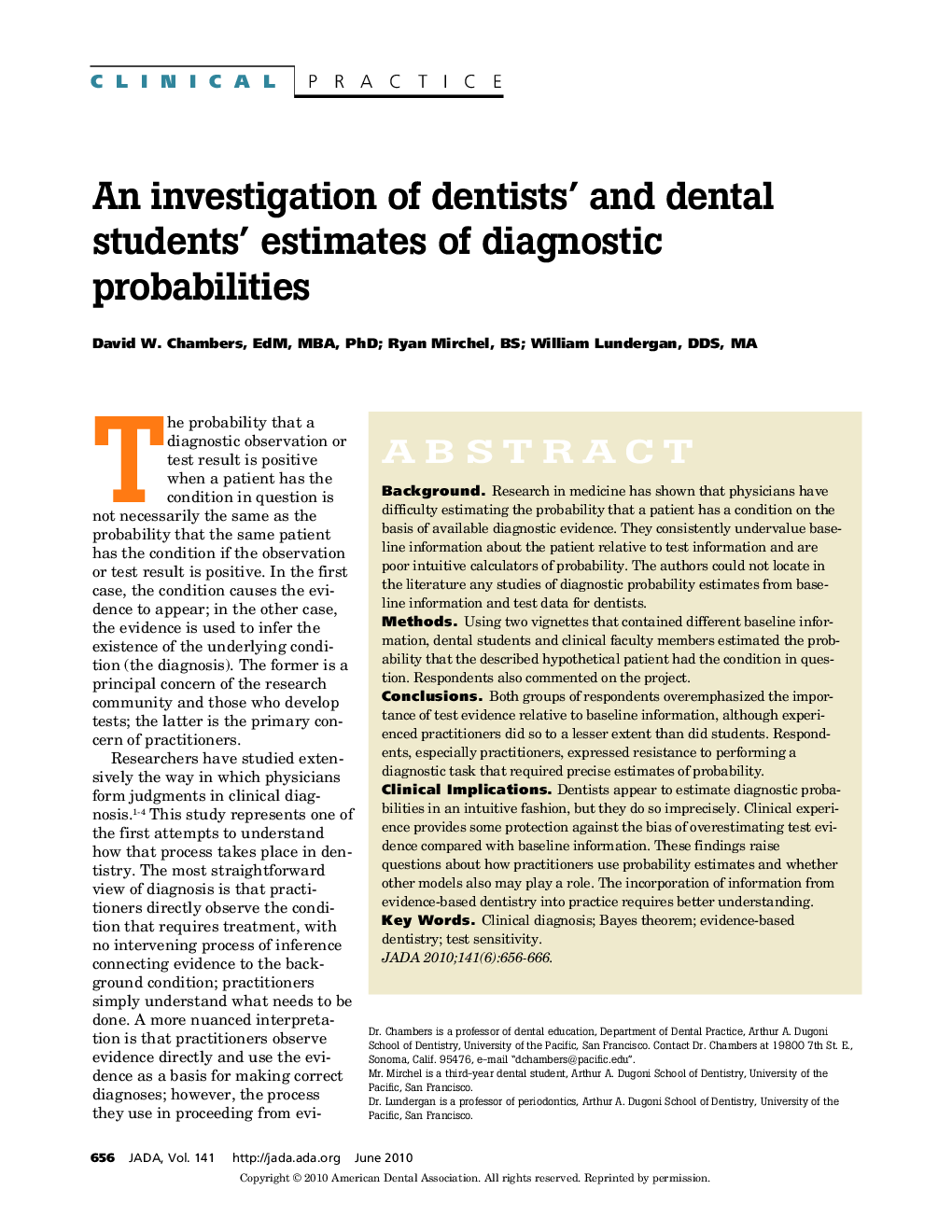| Article ID | Journal | Published Year | Pages | File Type |
|---|---|---|---|---|
| 3138547 | The Journal of the American Dental Association | 2010 | 11 Pages |
ABSTRACTBackgroundResearch in medicine has shown that physicians have difficulty estimating the probability that a patient has a condition on the basis of available diagnostic evidence. They consistently undervalue baseline information about the patient relative to test information and are poor intuitive calculators of probability. The authors could not locate in the literature any studies of diagnostic probability estimates from baseline information and test data for dentists.MethodsUsing two vignettes that contained different baseline information, dental students and clinical faculty members estimated the probability that the described hypothetical patient had the condition in question. Respondents also commented on the project.ConclusionsBoth groups of respondents overemphasized the importance of test evidence relative to baseline information, although experienced practitioners did so to a lesser extent than did students. Respondents, especially practitioners, expressed resistance to performing a diagnostic task that required precise estimates of probability.Clinical ImplicationsDentists appear to estimate diagnostic probabilities in an intuitive fashion, but they do so imprecisely. Clinical experience provides some protection against the bias of overestimating test evidence compared with baseline information. These findings raise questions about how practitioners use probability estimates and whether other models also may play a role. The incorporation of information from evidence-based dentistry into practice requires better understanding.
